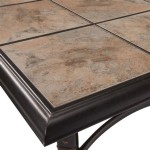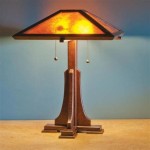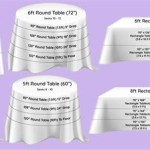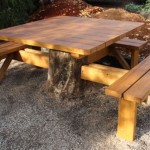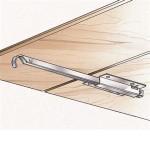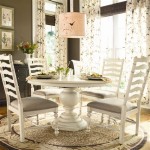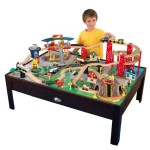The Enduring Appeal of the Natural Wood Coffee Table: Round Design
The coffee table holds a central position in the living room, serving as both a functional surface and a stylistic anchor. Among the various options available, the natural wood coffee table, particularly in a round design, stands out for its organic beauty, versatility, and ability to complement a wide range of interior design aesthetics. Its popularity stems from its inherent warmth, the unique character of the wood grain, and its ability to soften the angular lines often found in modern spaces.
The term 'natural wood' signifies that the table's primary components are crafted from solid wood or wood veneer, showcasing the inherent characteristics of the timber. The wood may be stained or finished to enhance its natural color and protect it from wear and tear, but the focus remains on preserving and exhibiting the wood's original texture and grain patterns. Common wood types used in crafting these tables include oak, walnut, maple, acacia, and reclaimed wood, each offering a distinct visual appeal and structural properties.
A round coffee table, in contrast to rectangular or square options, presents a softer, more inviting silhouette. It facilitates better flow within a room, making it easier to navigate around, especially in smaller spaces. The absence of sharp corners reduces the risk of accidental bumps and makes it a safer choice for households with children. The circular shape also encourages conversation, as it allows individuals seated around it to maintain eye contact and feel more connected.
Aesthetic Versatility and Design Integration
One of the key strengths of a natural wood round coffee table lies in its ability to seamlessly integrate into diverse design styles. In a minimalist setting, a simple, unadorned round table made from light-colored wood, such as maple or birch, can add a touch of organic warmth without disrupting the clean lines. The natural wood grain introduces subtle texture and visual interest, preventing the space from feeling sterile or overly stark.
In a more rustic or farmhouse-inspired interior, a round coffee table made from reclaimed wood or a darker wood like walnut, with visible knots and imperfections, can enhance the sense of character and history. The table can act as a focal point, complementing other natural elements like exposed brick, woven rugs, and linen upholstery. The round shape softens the potentially harsh textures often found in rustic designs, creating a more balanced and inviting environment.
For a modern or contemporary living room, a round coffee table with a sleek, minimalist design and a smooth finish can serve as a sophisticated addition. Opting for a wood with a prominent grain pattern, combined with metal legs or a contrasting base material, can add an element of visual interest and elevate the table's aesthetic. The circular shape helps to break up the predominantly linear forms typically found in modern interiors, introducing a sense of fluidity and visual harmony.
Even in eclectic design schemes, a natural wood round coffee table can find its place. Its neutral tones and organic texture allow it to blend effortlessly with a variety of colors, patterns, and furniture styles. It can act as a unifying element, grounding the diverse elements within the room and creating a sense of cohesion.
Functional Considerations and Practical Advantages
Beyond its aesthetic appeal, a natural wood round coffee table offers several practical advantages. The absence of sharp corners, as previously mentioned, enhances safety and ease of movement, particularly in high-traffic areas. The rounded shape also makes it easier to access items placed on the table from different angles, improving functionality and convenience.
The size of the round coffee table should be carefully considered in relation to the size of the living room and the seating arrangement. A larger table can serve as a central gathering point, providing ample surface area for drinks, snacks, books, and decorative items. However, in smaller spaces, a more compact round table is preferable to avoid overwhelming the room and impeding movement.
The table's height is another crucial factor. Ideally, the coffee table should be at the same height as the seat cushions of the surrounding sofas and chairs, or slightly lower. This ensures comfortable access to the table surface and maintains a visually balanced aesthetic. A table that is too high can feel awkward and intrusive, while one that is too low may require bending over excessively.
The durability of the wood and the finish applied are also important considerations. A solid wood table, properly treated and finished, can withstand years of use and resist scratches, spills, and other forms of wear and tear. Regular cleaning and maintenance, such as dusting and occasional polishing, can help to preserve the table's appearance and extend its lifespan.
Some round coffee tables also incorporate additional features, such as hidden storage compartments or lower shelves. These can be valuable for storing remote controls, magazines, or other items, helping to keep the living room clutter-free and organized. Tables with integrated storage are particularly useful in smaller spaces where every inch of available space counts.
Wood Selection and Its Impact on Style and Durability
The type of wood used to construct the coffee table significantly influences its aesthetic, durability, and overall cost. Each wood species possesses unique characteristics in terms of color, grain pattern, hardness, and resistance to moisture and pests. Understanding these differences can help in selecting the most appropriate wood for specific needs and preferences.
Oak is a popular choice for coffee tables due to its inherent strength, durability, and distinctive grain pattern. It is a relatively dense hardwood that resists scratches and dents, making it suitable for high-traffic areas. Oak is available in a variety of colors, ranging from light tan to medium brown, and can be stained to achieve different looks. White oak is known for its water resistance, making it a good option for surfaces prone to spills.
Walnut is a premium hardwood prized for its rich, dark brown color and elegant grain patterns. It is a durable wood that adds a touch of sophistication to any room. Walnut coffee tables are often more expensive than those made from oak or maple, reflecting the wood's higher cost and desirability. Walnut is a popular choice for contemporary and mid-century modern designs.
Maple is a light-colored hardwood with a smooth, uniform grain pattern. It is a strong and durable wood that is easy to work with, making it a versatile option for coffee tables. Maple can be stained to achieve a variety of colors, but it is often left natural to showcase its light, airy appearance. Maple is well-suited for minimalist and Scandinavian-inspired interiors.
Acacia is a fast-growing hardwood that is known for its durability and resistance to moisture and pests. It is a sustainable wood option that is often used in furniture making. Acacia wood exhibits a unique grain pattern with variations in color and texture, adding character and visual interest to coffee tables. It is a popular choice for rustic and bohemian-inspired designs.
Reclaimed wood, sourced from old buildings, barns, or other structures, offers a unique and environmentally friendly option for coffee tables. Reclaimed wood often possesses a weathered appearance with visible imperfections, adding character and history to the furniture. Each piece of reclaimed wood is unique, making it a one-of-a-kind addition to the living room. Reclaimed wood is often used in rustic, industrial, and farmhouse-style designs.
The choice of wood also influences the type of finish that is applied to the coffee table. Some woods, like oak and walnut, accept stains and finishes readily, allowing for a wide range of color options. Other woods, like maple, may require special preparation to ensure even absorption of the stain. The finish protects the wood from moisture, scratches, and fading, and also enhances its natural beauty.
Ultimately, the selection of a natural wood round coffee table requires careful consideration of aesthetic preferences, functional needs, and budget constraints. By understanding the characteristics of different wood species and design styles, individuals can choose a table that not only enhances the beauty of their living room but also provides years of reliable service.

Clairemont 48 Round Natural Oak Wood Coffee Table With Shelf Reviews Crate Barrel

Natural Wood Coffee Table Reclaimed Round Wooden Norway

Castalia Round Natural Wood Coffee Table Threshold Target

Cozayh 2 Piece Modern Farmhouse Living Room Coffee Table Set Round Natural Finish With Handcrafted Wood Ring Motif Com

Sian Pine Wood Rustic Round Coffee Table

Threeens 600mm Round Natural Pine Wood Coffee Table Center For Living Room Homary

Round Wood Pedestal Coffee Table Natural Hearth Hand With Magnolia Target

Modern Round Wood Rotating Tray Coffee Table With Storage Metal Legs In Natural Homary

Poly And Bark Goa 36 In Natural Medium Round Wood Coffee Table Hd Lr 571 Nat The Home Depot

Martha Stewart Belden 36 W Reclaimed Natural Wood Round Coffee Table 222g5 Lamps Plus
Related Posts

